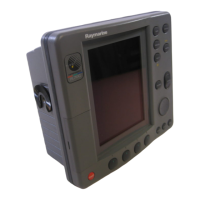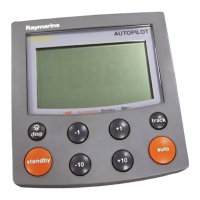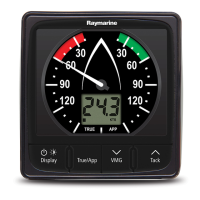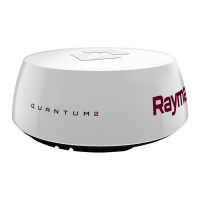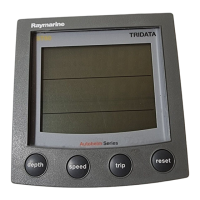Chapter 2: Getting Started & Adjusting the Display 2-21
Moving Around the
Chart
• The radar is redrawn to the scale and heading mode of the chart.
• The radar is set to True motion so that the radar and chart imagesremain
synchronised as the vessel moves.
Note: Depending on the topology of the coastline, the radar returns may not
relate to the charted shoreline, the radar image will therefore be different to
thechart display.For example,a gentlysloping beachwith a cliffseveralhun-
dred metres beyond the charted coastline,the cliff is not shown on the chart
but will be displayed on the radar image.
Changing the Chart Scale
The RANGE key allows you to change the chart scale so that you can see a
smaller or largerarea on the screen.
Plottermode is available to allowyou to zoom into a smallerarea, even when
nochartdataisavailableforthatscale.Section 7.7describeshowtosetplotter
mode on/off.
You can change the chart scale for two purposes:
• To see eithermore detail (of a smallerarea)or a larger area (in less detail)
on the screen.
• To move the displaytoanotherarea of thechart,byzooming outtoa small
scalechart, then zooming in on anotherposition centered on the cursor.
The cartographic detail available on charts varies according to the chart scale
and some areas includedetail at smaller scales than others. This can cause
blankareas on the displaywhen adjacentareas withdifferent levels of detail
are displayed.To reduce this affect you can use the Chart Set Up options (see
Section 7.7)tosetchartdisplaydetailtosimple.Then,asyouzoomin,charted
areasare displayedbut with less detail shown.
Each time you press the RANGE key, the chart scale changesto the next
available setting. The status bar indicatesthe distance fromtop to bottom of
thescreen, in nautical miles.
Figure 2-10: Changing the Chart Scale
RANGE
D4175_1
Increases the
chart distance
Decreases the
chart distance
Vertical distance
displayed on chart
Status Bar
6nm
CSR 50 45'980N
POS 001 01'490W
81186_3.book Page 21 Thursday, August 22, 2002 8:23 AM
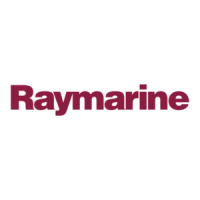
